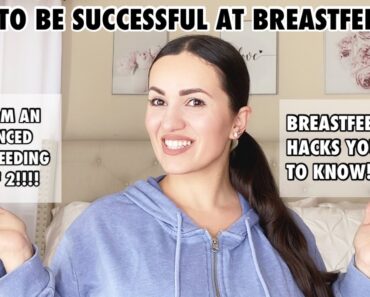“Raise your hand if you’ve made it through the pandemic without baking bread, getting a pet, or getting pregnant.”
It’s meant to be an innocuous meme, but seeing it the first time was like a slap in the face. Not only did I not become pregnant during lockdown, but the effects of COVID on the healthcare system was causing my fertility appointments to be bumped or canceled altogether.
Like so many other millennial women, I chose to wait until I was well-established in my career and had seen some of the world before I ventured into parenthood.
But about four months into trying for a family without success, I decided to head to my doctor to see if something was up. Right away, he referred us to a fertility clinic, saying “you’re over 35, so time is of the essence.” We had our first appointment in April 2020, during the first lockdown. I hoped a blood test or two would be able to tell us all is well, we just have to keep at it.
Anyone who goes through infertility knows that one of the first things your reproductive endocrinologist (RE) will do is test your AMH levels. AMH stands for anti-mullerian hormone, a marker of how many eggs you have left. At birth a woman is born with roughly 1.2 million eggs, and by her early 40s she has anywhere from 5,000 to 10,000.
As a 35-year-old, my AMH was supposed to be around 25. Mine was 2.14.
We had our first meeting with the RE over the phone. It was now May 2020 and COVID protocols were in full force.
The doctor was working from home with her kids making noise in the background. Matt and I strained to hear what she was telling us. It wasn’t good. She said with my AMH levels and low ovarian reserve we would need to move fast. She then began to spew a bunch of disheartening stats about the odds of us getting pregnant naturally.
We were shocked, but she said she was confident we would get pregnant, but the odds of it happening naturally were slim to none. She didn’t think it would come to in vitro-fertilization (IVF), but she did think some fertility drugs would be a good start.
By the end of the phone call, I knew getting pregnant wasn’t going to be easy. What I didn’t imagine was just how hard going through fertility treatments during a pandemic would be.
Over the next six months, I visited the fertility clinic at least twice—sometimes three times—a week for blood draws and ultrasounds. I got in my car before work and drove the 45 minutes from our home to the clinic. As a news anchor for a local radio station, I needed to be on-air at noon sharp, and I was always breathlessly scurrying in at the last minute, because mornings was the only time I had for clinic appointments.
I would screen myself for COVID symptoms at the clinic door, and then go in masked to a masked staff. I never once got to see my nurse’s smile, despite having sat across from her twice a week for a year.
After three rounds of oral fertility drugs failed, our RE suggested it was time to try intrauterine insemination, or IUI, a much less invasive and affordable procedure when compared to IVF. She wanted me to start gonadotropin injections right away, which I self-administered at home. The shots would increase my egg count per IUI cycle, which in theory would increase my chances of getting pregnant with IUI.
I was terrified of the procedure. I’d had some painful tests at the clinic that left me incredibly anxious. I fainted from the pain of a sonohysterogram, a type of ultrasound that looks at the inside of your uterus, just months before. Nurses advise you to take extra-strength Advil, but that didn’t cut it for me. So here I was, palms drenched in sweat, my heart racing as I sat alone in the waiting room. Thankfully, the IUI procedures ended up being uncomfortable, but not at all painful.
Our second IUI was on Valentine’s Day 2021. It was a Sunday and the lab technician let my husband inside the clinic only that one time. It was romantic in a weird way. This IUI didn’t work, and for the third one, it was just me and a masked nurse. It was just all so impersonal, sterile and cold. I desperately wanted my husband to be there to hold my hand and give me a kiss before I went into the lab to “make our baby”.
The night we found out our last IUI didn’t take, we had a Zoom call with a group of friends that was planned weeks earlier. I poured a big glass of wine, Matt whisky, and we clinked glasses virtually with our friends. But what I would have given to actually hug them that night; to be at our local pub squished into our booth together. To look into their eyes for real, and not through a computer screen.
But this reality was something the entire world was forced to face during a global pandemic.
Who were we to complain?
The immense loneliness of our infertility journey really hit me when I was scrolling through a fellow “infertility warrior’s” Instagram account. She had gone through infertility years prior and her journey was inspiring.
But as I scrolled through her feed, I noticed her infertility journey was peppered with spontaneous road trips out of the city when she got bad news from the doctors; beach getaways when her most recent round of IVF failed.
But what probably stung the most was a photo of her clinking martini glasses with her girlfriends, all cozied up together for a girls night out. I felt a black hole inside me; I hadn’t seen my girlfriends in person in months and barely talked to them on the phone.
Matt and I were going through an already lonely journey, completely alone.
Despite our doctor’s earlier prediction that we wouldn’t need IVF, I found myself, in early December 2021, alone again as I watched a tiny speck flash for a millisecond on the ultrasound screen, as the doctor transferred our last two embryos into my uterus. Days before Christmas we found out we had miscarried those two embryos.
I was at work when I got the call, exactly 2 minutes and 32 seconds before I went on-air. That’s how much time I had to process that my dream of having children may very well be over.
I don’t know how I pulled myself together and got through a four minute newscast with a lump the size of a tangerine in my throat.
When I signed off, I walked across the hall to an empty office, closed the door and fell onto the floor in heaving sobs.
I didn’t recognize myself anymore. It felt like overnight, I had gone from a happy, contented career woman to one whose sole purpose in life was to bear children.
January 2022 marked a fresh start. Things like heading to my yoga studio had previously helped me cope during some of life’s harder moments, but hadn’t been available to me because of the pandemic. Classes were offered virtually of course, but it wasn’t the same. So I used that as an excuse not to seek support.
I enrolled in an online group therapy session, called “Mind-Body Fertility”. Every Thursday night about 15 of us “meet” on Zoom. I never thought a computer screen would allow me to bond with other women like I did, but it has been a game changer.
There are still days that are tougher than others, but if this global pandemic has taught me anything, it’s gratitude. I’m learning to cherish each moment, taking it one day at a time, even if that means surrendering to uncertainty about what the future holds.

































